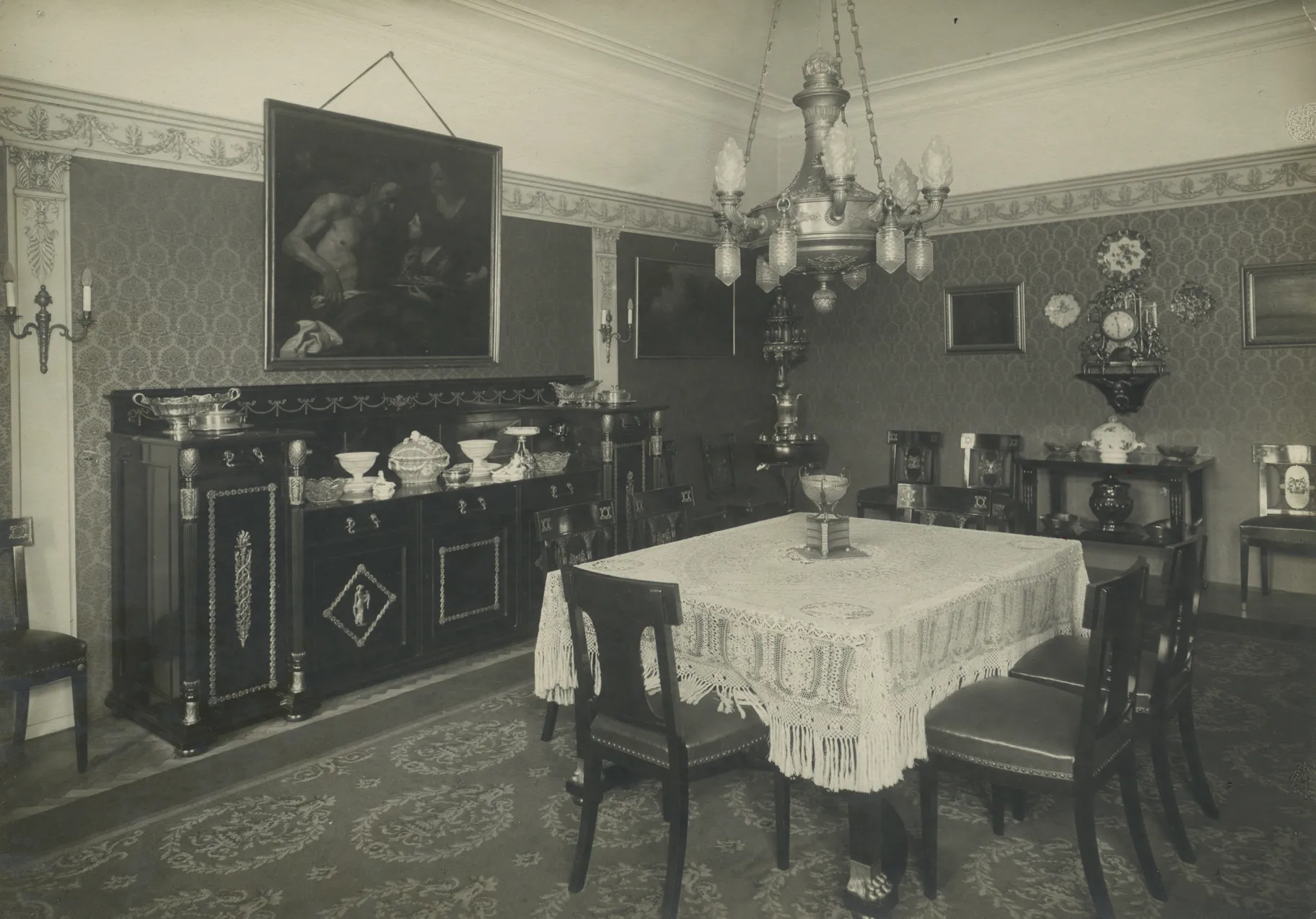A Jewish family — the Blochs — fled Nazi-occupied Czechoslovakia in 1938 and settled in Los Angeles. They had to leave behind their prized art collection, including a 17th-century painting, which Nazis stole. The family fought for decades to get the painting back, and eventually succeeded.
Their story is the subject of a new exhibition at the Skirball Cultural Center called RECLAIMED: A Family Painting. KCRW talks to Cheryl Bernstein, the great-granddaughter of Jewish Czech industrialist Johann Bloch, as well as Alissa Schapiro, the associate curator and collections specialist at the Skirball.
Created by German artist Johann Carl Loth, the Baroque painting depicts the biblical story of Isaac blessing Jacob from the Book of Genesis in the Old Testament.
Bernstein tells KCRW that while she doesn’t know as much as she’d like about her family history, it’s clear her great-grandparents had a deep appreciation for art and culture.
“When your family is ripped apart by a Holocaust … you lose your family history and the oral history,” says Bernstein. “What I do know is they bonded over their love of art.”
The Loth painting, which her great-grandmother purchased at an auction, was prominently displayed in the dining room of their home. When the Nazis invaded Czechoslovakia, her grandmother and mother fled to Los Angeles while her great-grandfather — and his art collection — remained behind.
His intention was to flee too, but he died of a heart attack in December 1940, while still working to get export permits and exit visas. His home was seized to be used as housing for the Luftwaffe (the aerial branch of the German military), and his assets were frozen.
Schapiro says they believe the Loth painting was stolen from the house in summer 1939. And though the National Gallery of Prague told the Blochs that the painting was in storage with the rest of their collection in Prague, it had, in fact, been sold at the Dorotheum auction house.
What made the painting even more difficult to track down, Bernstein explains, is that its name and the name of the artist were changed. Schapiro says, “We don't know exactly [why]....What we do know is that by changing the name of the artist to a better-known Baroque painter of the same period, Luca Giordano, that the estimated value of it was much higher than it was under the name of Johann Carl Loth.”
Jewish families’ fight to reclaim stolen artwork is often an uphill battle, Schapiro points out.
“I've looked at prominent Jewish art gallerists and they had hundreds, if not thousands, of works stolen. So you multiply that by how many places that the Nazis occupied. If you even think just about the Jewish families and their works of art, or the works by Jewish artists in national museums in Germany, that number is extraordinary.”
Nazis kept meticulous, although dubious, legal records, which helps scholars like herself figure out what happened. But the burden of proof is high.
She continues, “A lot of institutions that have works of art that were stolen by the Nazis from Jewish families, they don't want to give back things if the original owners can't definitively prove that not only they owned these works, but that they were forcibly taken by the Nazis.”
But, thanks to the excellent records kept by Bernstein’s grandmother — and decades of determination by the women of her family — they were able to reclaim the Loth painting.
“My grandmother was so incredibly smart and forward-thinking. As she's fleeing in the middle of the night with her toddler, she had the presence of mind to take the professional photographs of the inside of her father's home with her,” says Berstein. “And the minute she found out her father had died … they started working on his estate.”

The 17th-century Johann Carl Loth painting originally hung in the Bloch’s Czechoslovakia home, pictured here. Photo courtesy of Elizabeth H. Scholtz.
In the Skirball exhibition, which will be on view through next March, the painting will hang in a replica of the dining room of Bernstein’s ancestral home in Czechoslovakia. She says seeing it back in its original location feels right.
“Bringing something like the Loth painting back to your family — that my grandmother worked on all her life, that my mother literally gets to see — is a very tangible step towards putting the pieces of your life back together that you didn't even know were missing,” says Bernstein. “It's extraordinary. It's more than I can put into words.”
